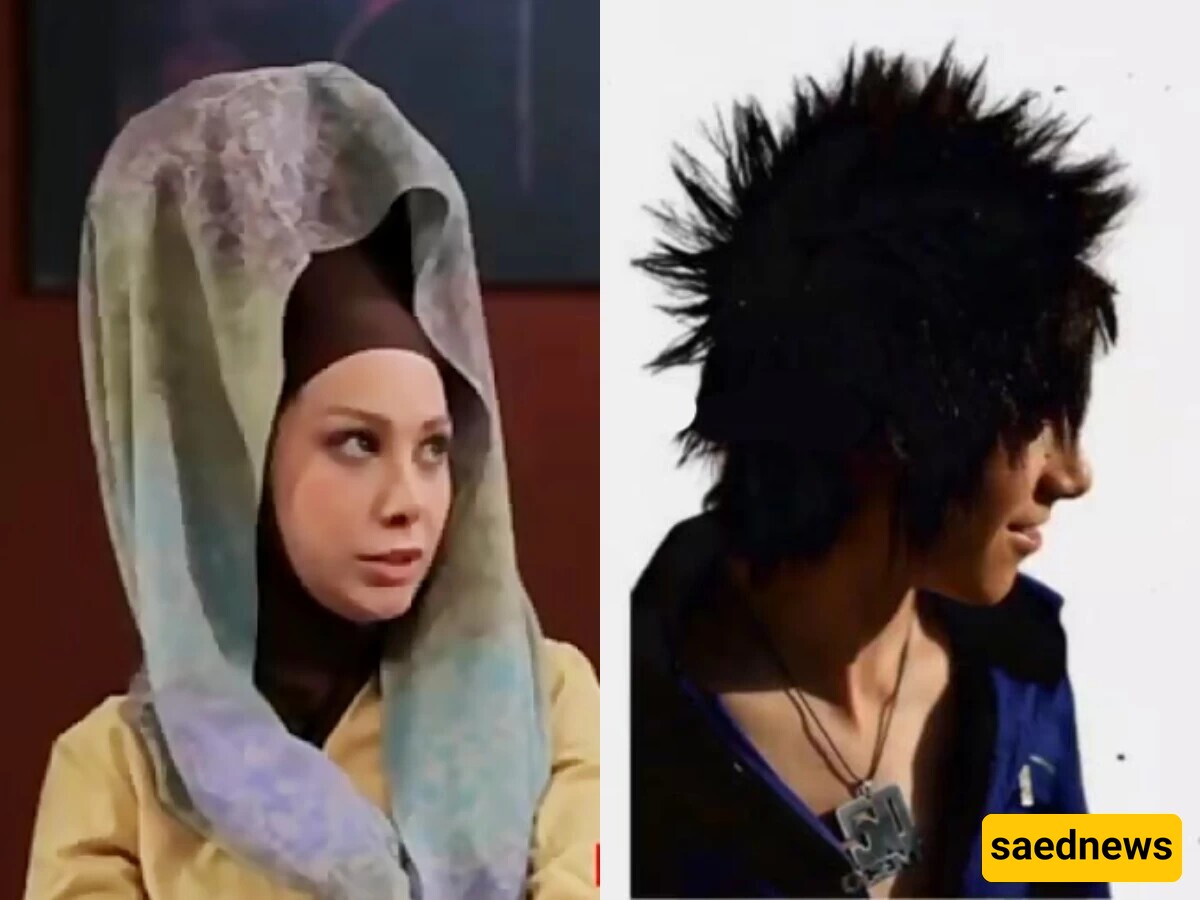It’s strange, but if we look closely, we’ve probably fallen for it multiple times ourselves. Fallen for what? Fashion trends that are neither beautiful nor lovable, yet for some obscure reason, once they become popular and widespread, everyone (even their critics) ends up embracing them.

According to Saed News’ Family Magazine Service, it’s surprising, but if we take a closer look, we too have likely succumbed to this phenomenon. Trends that aren’t really attractive, yet due to some inexplicable reasons, they become mainstream, and even those who initially dislike them eventually follow suit.
For example, you might remember the pineapple hairstyles or the odd hair clips from the '80s. Despite the criticism they received, a wide range of young people eagerly adopted them and put together various outfits based on the trend. But why? How does an inappropriate or even ugly fashion trend end up being embraced by everyone?
The Desire for Social Approval
Seeking social validation or blending in with the crowd has always been a fundamental human tendency. People naturally don’t want to be isolated or feel like outsiders. Even when someone perceives themselves as superior, being completely different from the group for a long time often becomes unpleasant. This is why, when something becomes trendy, most people, even blindly, try to follow it. Being part of a larger community provides a comforting sense of belonging, which unconsciously prevents people from feeling lost. This might explain why even unattractive or inappropriate trends gain followers.
Seeking Attention and Uniqueness
Just as isolation is difficult for people, attracting attention and standing out can be equally desirable. Sometimes, unusual and inappropriate fashion trends become popular simply because they grab attention. This is especially common among teenagers, who are constantly experimenting with different styles as they search for a stable identity. By following the latest trends, they try to make a name for themselves and express their individuality. Through this self-expression, they gain visibility, which gradually helps them develop a stronger sense of identity.
The Power of Advertising and Marketing
The world of advertising has infiltrated every aspect of our lives. With relentless marketing tactics, brands and companies continuously shape our desires—both consciously and subconsciously. If an unattractive clothing style, hairstyle, or makeup trend suddenly gains massive popularity, it is likely the result of extensive and persistent efforts by corporations. They use various advertising strategies to keep us engaged, subtly influencing us to follow fashion trends.
When you repeatedly see something everywhere—on celebrities in movies, social media influencers, athletes, etc.—it slowly becomes normalized, and eventually, you might give in. Isn't that true? Sometimes, people follow trends not because they find them beautiful but because they subconsciously aspire to be like those who promote them.
Social and Sociological Factors
The era we live in plays a significant role in shaping trends. In times of societal pressure or hardship, people tend to gravitate toward fashion choices that allow for greater self-expression. For example, after the peak of the COVID-19 pandemic, the fashion world saw an explosion of bizarre and exaggerated designs. It seemed like, during times of stress, people used art and fashion as an outlet for self-expression. The result? Trends that, in retrospect, seem laughable and ridiculous.
Fashion as a Form of Rebellion
One of the most interesting aspects of unconventional fashion trends is their rebellious and outspoken nature. Sometimes, in response to social restrictions or global circumstances, people use their clothing and style to express defiance. Throughout history—and even today—many trends have emerged as a form of protest, particularly among young people.
For example, tattoos and piercings have become increasingly common in Iran and around the world in recent years. This could be a reflection of the younger generation’s desire for greater control over their personal lives. Unlike previous generations, today’s youth are more aware of their need for autonomy and express this through their clothing and appearance. Fashion has not always been just about aesthetics; at times, it has served as a means of protest and self-expression. Nowadays, we see this even more, as the younger generation boldly pursues styles that make them appear more daring and fearless.
Adding Variety to Life
Following fashion, even when it isn’t particularly attractive, can make life feel more exciting and diverse. This might explain why, despite being unnecessary, fashion continues to be a major part of people’s lives. The truth is, everyone enjoys bringing a bit of variety and vibrancy into their daily routine. New fashion trends provide this opportunity.
After all, how many different ways can you style your clothes, hair, and makeup? It’s natural that, from time to time, trends take on absurd or even ugly forms. But despite this, the freshness and novelty that fashion offers keep people engaged and willing to embrace it.
In Conclusion
Fashion and style, even when they bring forth unattractive and inappropriate suggestions, tend to gain widespread acceptance. Over the years, there have been countless ridiculous and even laughable trends that became mainstream. Now, we can only wait and see what the fashion industry has in store for us next. Whether we like it or not, trends continue to infiltrate our lives, and we often fall for them—at least a little.
What do you think? Why do unappealing trends still attract followers?






